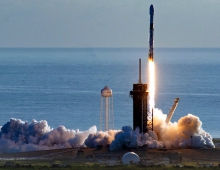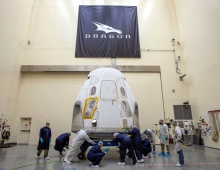
SpaceX Releases Guide For Potential Satellite Customers
SpaceX released guidelines for companies looking for "rideshares" -- send their satellites to space using the rockets of SpaceX.
Sending equipment to space is expensive due to the cost of constructing, fueling rockets and support operations. But small companies can cut down on these costs by pursuing launches that already have a big satellite on board.
The User’s Guide is a planning document applicable for a small satellite 15” or 24” diameter mechanical interface within the SpaceX Falcon 9 Launch Vehicle configuration with a 5.2 m (17-ft) diameter fairing and the related launch service. SpaceX is also accepting larger payloads, which will may be accommodated on top of the Rideshare hardware.
SpaceX plans to use its Falcon 9 for the program, which is a two-stage rocket that carries a variety of things into space.
SpaceX says that companies can send a 440-pound satellite into one kind of orbit for as little as $1 million. The orbit is called "sun synchronous", meaning that the satellite orbits in a path that keeps the sun at a consistent altitude — allowing for constant lighting conditions below for imagery. These missions would fly every four months, and if the customer's satellite is delayed, they can rebook to a future mission with a 10% booking penalty.
Other orbital paths are also available, such as low Earth orbit, geostationary transfer orbit to get high above Earth, or trans-lunar injection to send satellites on to the moon.





















